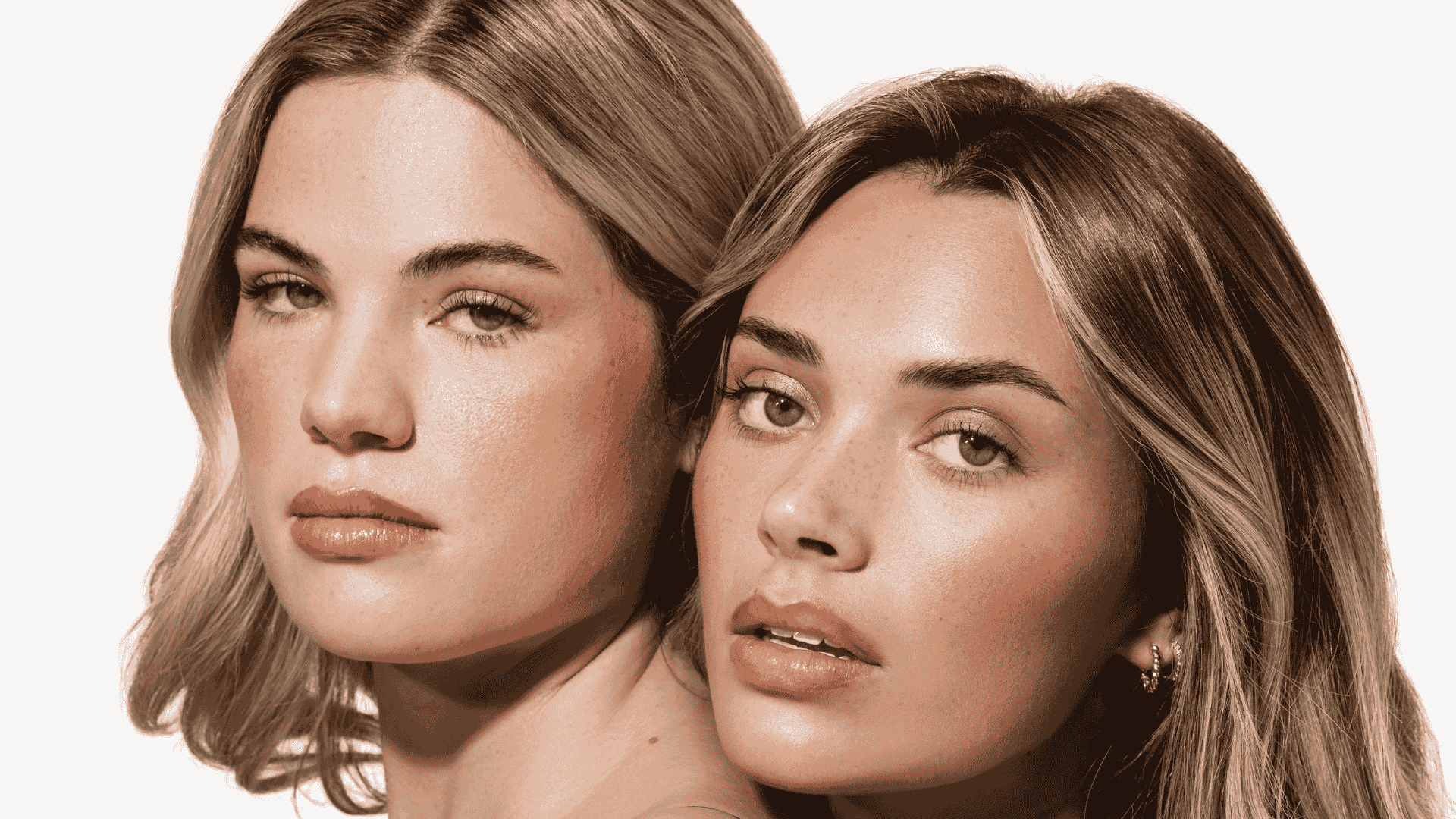Article: Brushes vs. Beauty Blenders: Which is Best for Your Skin?

Brushes vs. Beauty Blenders: Which is Best for Your Skin?
Choosing the right makeup tools can transform your beauty routine, taking it from average to flawless. Among the most beloved tools in any makeup kit are the versatile makeup brushes and the iconic beauty blender.
But which tool is right for you? This in-depth guide will help you make an informed choice by exploring each tool’s strengths, application techniques, cleaning tips, and impact on your makeup finish.
Brushes vs. Beauty Blenders: Key Differences
When it comes to performance, the main differences lie in precision, texture, and application style between brushes and sponges. Brushes excel at detail and layering, while beauty blenders give a soft, blurred finish. Brushes may leave streaks if not blended well, while a damp beauty blender presses products evenly into the skin for a more natural appearance, which many pros depend on.
What is a Makeup Brush?
Makeup brushes come in various shapes, sizes, and bristle densities, each designed to apply specific products or create distinct effects. These tools allow for targeted application, making them ideal for detailed work, such as contouring, highlighting, and eyeshadow blending.
Brushes are made from synthetic or natural bristles, with synthetic bristles being more popular for liquid products and natural ones for powder formulas.
Types of Brushes:
-
Airbrushed Kabuki Brush: Known for its dense, rounded bristles, this brush is ideal for buffing and blending liquid or powder foundation into the skin. It creates an airbrushed finish, making it perfect for achieving flawless, full coverage.
-
Tamed Brow Brush: This brush features an angled design with firm bristles, making it ideal for defining and filling in eyebrows with precision. It can also be used to apply brow powders, gels, or pomades for a natural, tamed look.
-
Concealer Brush: With a small, flat shape, this brush allows for precise application of concealer on specific areas, such as under the eyes or around the nose. It works well for liquid and cream concealers, helping to cover blemishes and dark spots seamlessly.
-
Blush Brush: This soft, rounded brush applies blush evenly across the cheeks, adding a natural flush. It picks up powder blushes and distributes them in a way that enhances the cheeks with just the right amount of colour.
-
Eyeshadow Blending Brush: With its fluffy, dome-shaped bristles, this brush is ideal for blending eyeshadow seamlessly across the lid and into the crease. It helps create soft, diffused edges for a natural or smoky eye look, depending on the technique used.
-
Detailing Brush: A small, precision brush perfect for intricate work, like applying eyeshadow to the inner corners or along the lower lash line. This brush is great for adding detail and depth to eye looks.
-
Eyeliner Brush: With a fine, tapered tip, this brush is designed for applying eyeliner with precision. It works well with gel liners, cream liners, or even dark shadows to define the lash line.
-
Lip Brush: This small, firm brush is perfect for precise application of lipsticks and lip glosses. It allows for detailed work around the lip line, ensuring clean and even coverage.
-
Highlighting Brush: Often with a tapered shape, this brush is perfect for applying highlighter to the high points of the face, like the cheekbones, bridge of the nose, and cupid’s bow, for a luminous finish.
-
Powder Brush: A large, fluffy brush ideal for dusting loose or pressed powder over the face. It provides an even application that helps to set makeup without disturbing other layers.
Why Choose Brushes?
1. Precision and Control: Brushes provide a level of control that’s hard to achieve with other tools, allowing for detailed application and layering without disturbing existing makeup.
2. Layering Capability: Brushes let you build coverage gradually, perfect for contouring and creating structured makeup looks.
3. Application Variety: With the wide variety of brushes available, you can find one for almost every makeup product or technique.
Application Techniques with Brushes
Brushes require specific techniques to bring out their best qualities:
- Foundation: Apply foundation with a flat foundation brush, then blend with a stippling brush for an airbrushed finish.
- Powder Products: Use a fluffy powder brush for loose or pressed powder, dusting it lightly over the face.
- Eyeshadow: Blend shadow with a fluffy brush in small, circular motions for a seamless look.
Best Practices for Cleaning Brushes
Keeping brushes clean ensures a smooth application and helps avoid skin irritation:
- Clean face brushes weekly and eye brushes every two weeks.
- Use a gentle brush cleanser or baby shampoo. Rinse thoroughly, reshape, and let them dry flat to prevent water from weakening the glue in the handle.
What is a Beauty Blender?
The beauty blender, or makeup sponge, revolutionized the beauty industry. These sponges are made from latex-free foam, often shaped like an egg for versatile application. They can be used dry or dampened, with a damp beauty blender giving a natural, dewy finish.
The rounded shape allows for seamless blending across the face, while the pointed tip helps reach difficult areas like under the eyes.
Types of Blenders:
-
Classic Beauty Blender: The iconic egg-shaped sponge with a rounded bottom for blending large areas and a pointed tip for precise application around the nose, eyes, and mouth is a favourite tool for many makeup artists. It can be used damp for a dewy finish or dry for fuller coverage.
-
Mini Precision Blenders: Small, rounded sponges designed for targeted application, perfect for applying concealer under the eyes, around the nose, or blending highlighter on smaller areas like the brow bone. These are great for detail work and precise blending.
-
Flat-Edge Blender: A sponge with a flat surface on one side, ideal for pressing and setting powder onto the skin, especially under the eyes and along the T-zone. The flat edge also allows for sharper contouring and more controlled application.
-
Contour Blender: This blender has an angled edge, making it ideal for applying and blending contour along the cheekbones, jawline, and forehead. The angled shape provides better control for sculpting and defining facial features, especially when using a foundation brush.
-
Multi-Sided Blender: With multiple flat and rounded edges, this versatile blender can be used for everything from foundation application to contouring and highlighting. Each side offers a unique surface for blending, making it easy to switch between products and techniques.
-
Velour Powder Puff: A plush, velvety puff designed specifically for powder application. Unlike traditional sponges, it provides a soft, matte finish and is excellent for setting makeup without adding extra shine. It’s especially useful for touch-ups throughout the day.
-
Microfiber Sponge: A dual-layer sponge with a microfiber coating that prevents excessive product absorption, allowing for a more even application with less product waste. The texture is ideal for achieving an airbrushed, full-coverage look.
-
Silicone Sponge: A non-porous sponge that doesn't absorb product, making it incredibly efficient with liquid foundations and creams. It’s easy to clean and perfect for those who want minimal product waste.
Why Choose a Beauty Blender?
1. Seamless Blending: A damp beauty blender presses makeup into the skin, creating a smooth, airbrushed effect without streaks.
2. Dewy Finish: The sponge’s texture allows for a radiant, natural finish, perfect for those with dry skin or who prefer a fresh, hydrated look.
3. Versatility Across Products: Beauty blenders, which come in different shapes and sizes, work well with liquids, creams, and powders, providing a consistent finish across all product types.
Application Techniques with a Beauty Blender
To get the most out of a beauty blender, try these techniques:
- Dampen for Foundation: Wet the beauty blender, squeeze out excess water, and then dab the sponge in your foundation. Bounce it on the skin to blend seamlessly.
- Concealer: Use the pointed end to apply concealer under the eyes, dabbing softly to blend without disturbing the foundation.
- Setting Powder: Dip a damp beauty blender in loose powder to set concealer or the T-zone for a longer-lasting finish.
Best Practices for Cleaning Beauty Blenders
Regularly cleaning your beauty blender prevents bacteria build up:
- Ideally, clean after every use.
- Soak in warm water, apply a gentle cleanser, massage to remove makeup, then rinse and air dry in a well-ventilated area.
Common Mistakes - Makeup Brushes
Applying makeup is as much about the right techniques as it is about the products and tools themselves. Even experienced makeup lovers can fall into common pitfalls that can impact the final look.
1. Overloading the Brush with Product
- Mistake: Dipping the brush too heavily into a product can result in uneven application and a cakey, unnatural finish.
- Solution: Start with a small amount of product and build up gradually. Lightly tap off excess product before applying to the face, especially with powder products. Remember, it’s always easier to add more product than to remove excess.
2. Using the Wrong Brush Type for the Product
- Mistake: Each brush is designed for a specific purpose, and using the wrong type can lead to streaky or patchy results.
- Solution: Familiarize yourself with different brush types and their uses. For instance, use dense, synthetic brushes for liquid or cream products and fluffier, natural brushes for powders. This will improve both the application and longevity of the product.
3. Applying Too Much Pressure
- Mistake: Pressing down hard with your brush can disturb the layers of makeup underneath, resulting in a patchy finish.
- Solution: Use a light hand when applying products, particularly when working with powders or layering products. Gently sweep or pat the brush over the skin instead of dragging it, which can move other makeup underneath.
4. Neglecting to Blend Properly
- Mistake: Not blending enough can leave harsh lines, particularly with eyeshadow, contour, and blush.
- Solution: Take extra time to blend, especially in areas where products meet (like foundation and contour or different eyeshadow shades). For face makeup, circular or stippling motions can help achieve a more blended, airbrushed effect.
5. Skipping Regular Cleaning
- Mistake: Dirty brushes harbour bacteria, which can lead to breakouts and skin irritation.
- Solution: Clean brushes weekly if you use them daily, particularly face brushes, to avoid product buildup. Quick daily cleanings with a spray cleanser can help, but deep-clean with soap or brush shampoo every 1-2 weeks for a more thorough cleanse.
6. Holding the Brush Too Close to the Bristles
- Mistake: Holding the brush near the bristles gives less control and leads to a heavier hand, which can cause patchiness.
- Solution: Hold the brush handle farther back to create a softer, more diffused effect. This technique is especially helpful with blending brushes for a lighter, more natural application.

Common Mistakes - Beauty Blenders
1. Using the Beauty Blender Dry
- Mistake: Using a dry beauty blender with liquid or cream products can lead to product absorption, waste, and a blotchy finish.
- Solution: Always dampen your beauty blender before use. Run it under water until fully saturated, then squeeze out the excess. A damp beauty blender creates a smooth, dewy finish and helps distribute the right amount of foundation evenly without absorbing too much.
2. Dragging Instead of Bouncing
- Mistake: Dragging a beauty blender across the skin can disrupt the foundation and lead to streaky application.
- Solution: Use a bouncing or stippling motion instead. Gently press or bounce the sponge onto your skin to blend the product evenly. This technique is especially effective for achieving a flawless, airbrushed finish with foundations and concealers.
3. Not Cleaning the Beauty Blender Regularly
- Mistake: Beauty blenders can trap bacteria, leading to skin issues if not cleaned regularly.
- Solution: Wash your beauty blender after every use. You can use a gentle cleanser or a specific beauty blender soap. For a quick clean, rinse thoroughly under warm water, squeezing until the water runs clear. For a deep clean, soak it with a bit of cleanser and let it sit before rinsing.
4. Using Too Much Product
- Mistake: It’s easy to apply too much product when using a beauty blender, especially if it’s not fully damp.
- Solution: Start with a small amount of product, dot it on the face, and then blend. You can always add more if needed, but it’s harder to remove excess without wiping off layers.
5. Over-Blending
- Mistake: While blending is essential, too much blending can thin out coverage, especially with concealer or foundation.
- Solution: Focus on blending just enough to achieve an even layer and a seamless finish. When applying concealer, for instance, gently pat and blend without fully diffusing the product if you’re looking to maintain coverage in specific areas.
6. Ignoring the Sponge Shape
- Mistake: Not utilizing the different sides and edges of the beauty blender can limit the versatility of your application.
- Solution: Use the rounded base for larger areas like the cheeks and forehead, the pointed tip for precision areas like under the eyes, and the edges for applying contour and highlighter, depending on the brush you choose. This way, you’ll achieve a more controlled, professional application.
Conclusion
In the brushes vs. beauty blender debate, both tools offer distinct benefits and can enhance your makeup routine. For a polished, full-coverage look with precise application, makeup brushes are ideal.
However, if you’re after a natural, seamless blend, especially with liquid and cream products, a beauty blender may be your go-to expert make-up personal preference. Many makeup enthusiasts find that a combination of both tools brings the best results, achieving flawless coverage with a well-blended finish.





